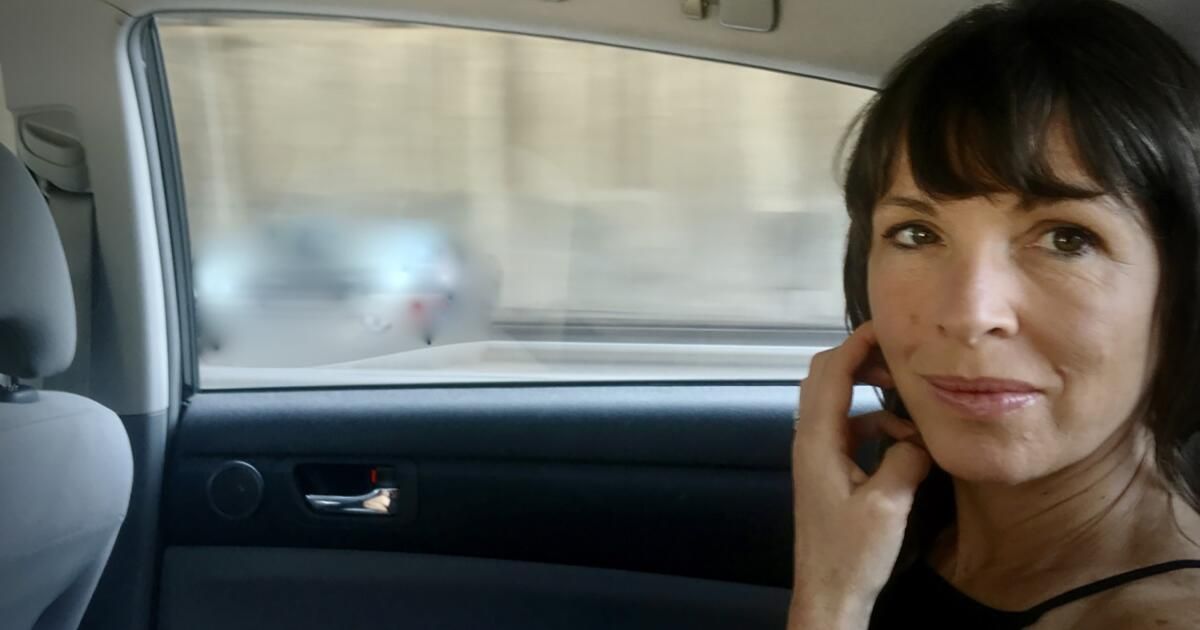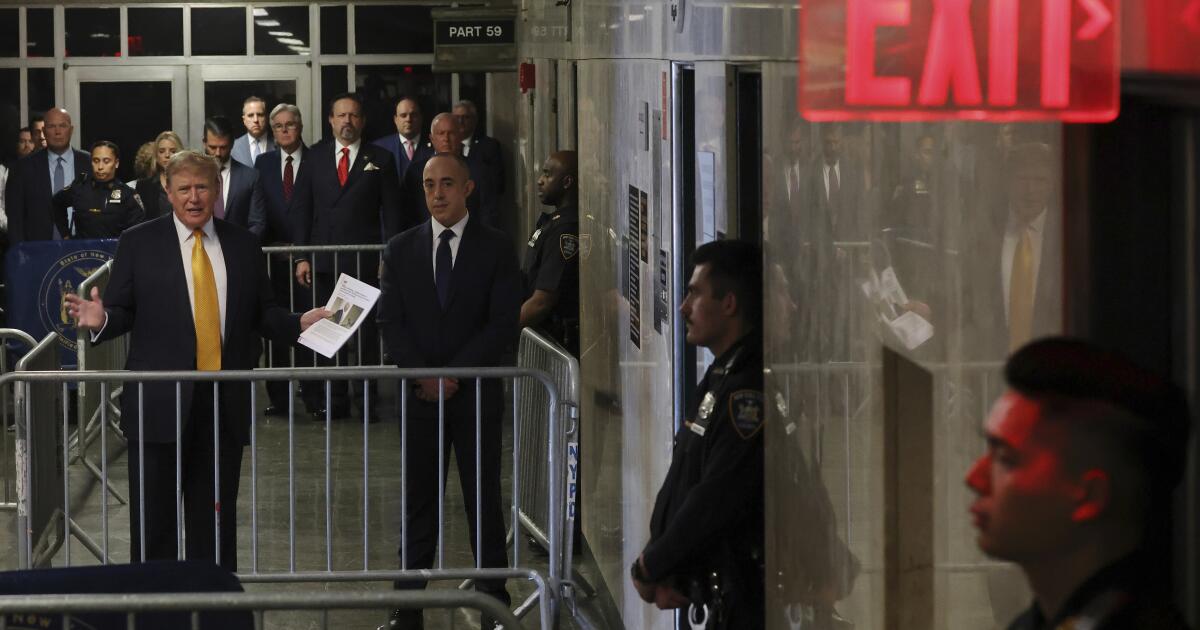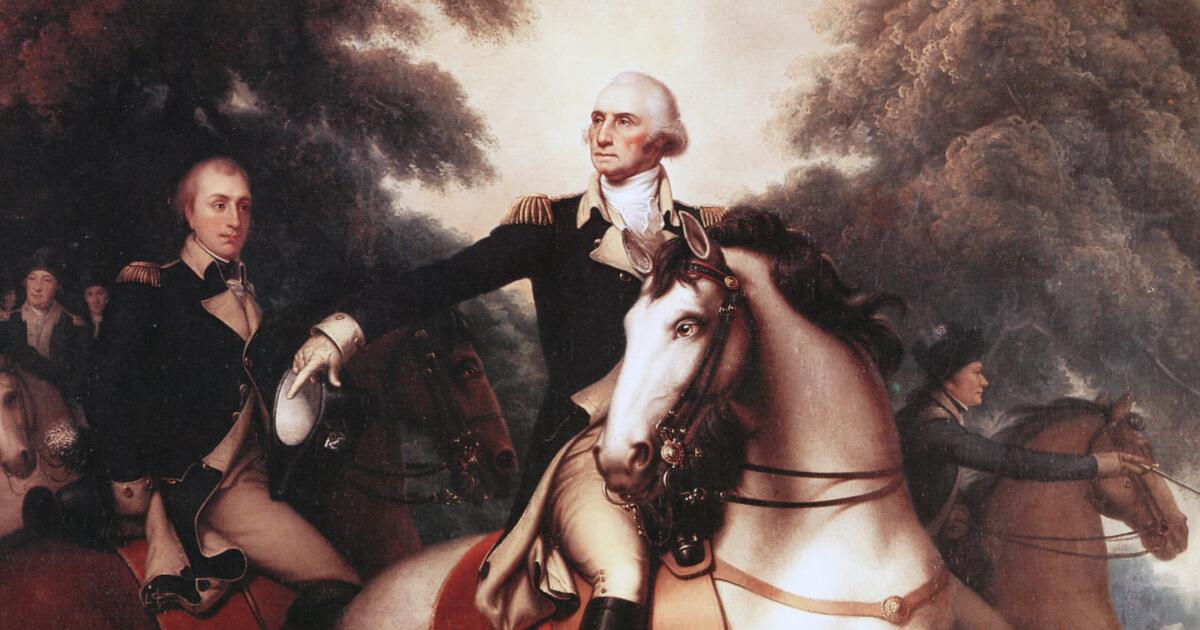Book Review
parade
By Raquel Cusk
Farrar, Straus and Giroux: 298 pages, $27
If you buy books linked to on our site, The Times may earn a commission from Bookshop.org, whose fees support independent bookstores.
Several years ago I attended a reading by Rachel Cusk of “Kudos,” the final installment of her “Outline” trilogy. She read near the end of the novel, when the character Paola explains why she rides a bike instead of driving. One morning, Paola tells the narrator, Faye, and her friend Felícia, that while she was rushing to get her daughter ready for school, she looked out the window of her house and noticed that her car was missing, and she met her ex-husband. . she had a key. As Cusk read, pausing occasionally for emphasis, the audience prepared itself.
“I realized that I had unconsciously brought a sense of security and legitimacy out of the car,” says Paola. “Until that moment when I looked out the window and saw the empty space where the car had been, I had been holding on to an illusion.” As Cusk read these lines, several audience members sighed and even gasped. A woman shook her head. Another said simply and quite loudly: “No.”
What delusion was Paola in and why was this moment so horrible? The answer comes to us in the form of Cusk's new novel, “Parade.” Told in four sections, each containing multiple stories, “Parade” has perplexed critics and may do the same for readers, unless they understand what Cusk is going for or are curious enough to discover it.
Cusk followed the “Outline” trilogy with the novel “Second Place,” a retelling of writer and arts patron Mabel Dodge Luhan's epic spiritual war with the toxic D.H. Lawrence, which Luhan chronicled in her 1932 memoir, “Lorenzo in Taos.” Lawrence is one of Cusk's favorite writers, and his influence is perhaps felt most markedly in “Parade.”
When Cusk writes about the erasure of women, whether on the page, in society, or in relationships, she means it (as Lawrence did) literally. It is not just spiritual or mental death but an all-encompassing end. “Parade” takes this idea a step further, exploring the total destruction of the female self through art, inspired by real artists like Louise Bourgeois and Paula Modersohn-Becker.
Lawrence hated women. Cusk? In the first section of “Parade,” “The Stuntman,” he describes a “sense that everything seems right but fundamentally wrong” as his “sex condition.” Painter G has painted his wife upside down. The naked portrait is cruel, horribly ugly. Still, the woman cares about nothing except her talent.
When the anonymous narrator of the next story in the section is assaulted on the street by a stranger, she is not surprised. She feels that it is possible that she somehow deserved it.
“Yes of courseI had thought when I woke up after a shattered interval and found myself lying on the street in blinding pain with no idea how I got there.”
A section inspired by the life of the painter Modersohn-Becker proposes that when women emerge from a false sense of security, as Paola did when she looked out the window that morning, they enter a “world of security.” [their] own illegitimacy.” What is feminine art like? The answer “would have to be composed primarily of a kind of nonexistence,” Cusk writes.
In a 2022 interview with Merve Emre for the Yale Review, Cusk said she was focusing on the following questions: “Does the female voice have to remain unlived or unrevealed? Does its value derive from its nonexistence or its existence in silence, from not being free, from not having things and from the type of knowledge that arises from this? Or is it actually a different existence and a different spirituality in itself?
In the second section of the book, “The Midwife,” another version of “Painter G,” a woman, remembers toiling in her sordid studio as “a complete erasure or absence of an external self.” Only when she began exhibiting her work and she got representation in a gallery “did she become identifiable as a woman. This was not a sexual but a social femininity, offered to her as a form of weakness.”
The haters say Cusk ended the plot in the “Outline” trilogy and has now eliminated the character in “Parade,” one step too far. But it is possible that the intentional absence of character is a way of raising questions about identity.
As in the “Outline” trilogy, “Parade” does not offer a direct characterization of its narrators. But we learn a lot about the characters from what they choose to report. In fact, we learn more than we would like to know, such as the shame and guilt of being a mother and daughter. “Shame had always been behind G,” Cusk writes of the painter, “colossal and limited, like water behind a dam.”
In the third section, “Divers,” Julia’s character asks, “Doesn’t everyone feel like their mother could have been an artist? Maybe we feel this way because we are guilty of ruining our mothers' lives.”
While the last section of the book, “The Spy,” is the weakest, “Parade” is ultimately revealed to be the work of the same genius as the “Outline” trilogy and “Second Place,” one of the most demanding and terrifying. novelists working today. “Parade” is a guide or a warning. How exciting not knowing which one.
Jessica Ferri is the owner of Womb House Books and the author, most recently, of “Silent Cities San Francisco.”












